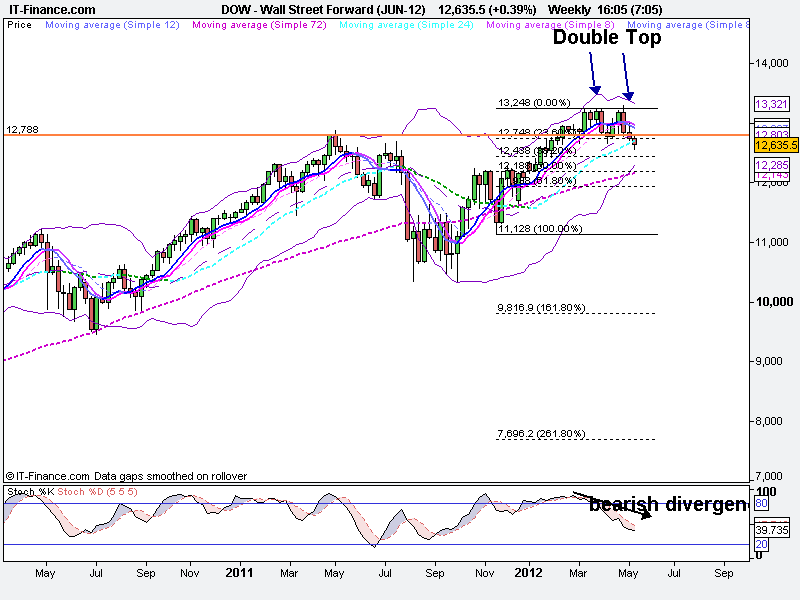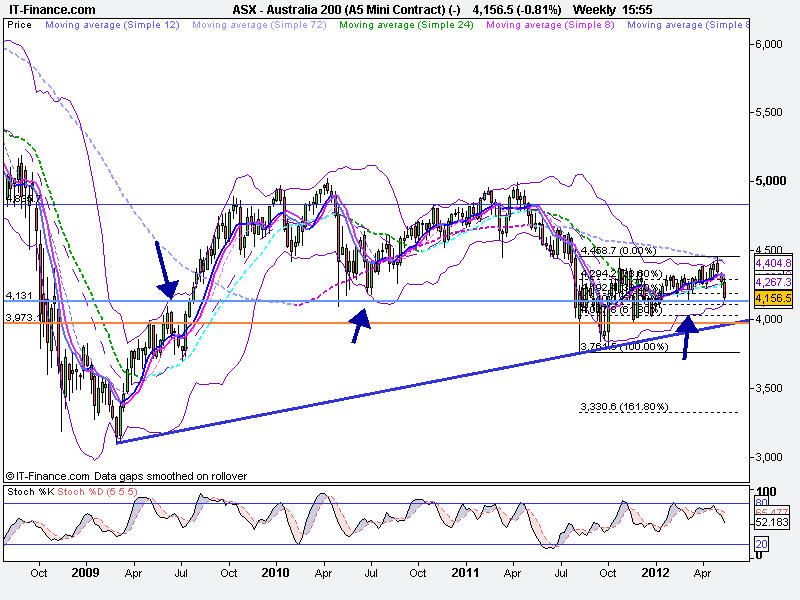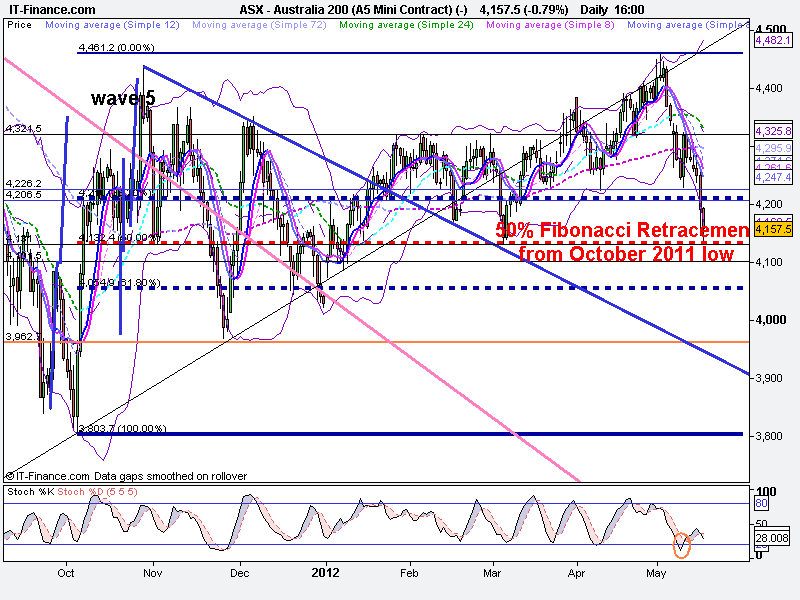So many times we hold a position for the wrong reasons; you enter a position for a particular hopefully valid reason and then the trade doesn’t bring the expected results. But rather than getting out of the position and moving on we hold on to them far too long. Our excellent trading strategy is replaced with
a) the hope that things will turn around and .
b) we get emotionally attached or ‘anchored’ to a certain price that we hope to ‘get’ back to again or at least to get out break even.
c) we justifying holding on to the trade with the old adage: “A loss is only a loss when the trade is closed” or we find new reasons why we could give the trade just one last chance to turn around
What do all of these ‘reasons’ have in common? It’s simple. The “YOU” Factor! They have nothing to do with fundamentals or technicals, and everything to do with your psychology. The culprit really are those innate, subconscious behaviors also called biases in the neuro science world that evolution has equipped us with so that we stand a better chance of surviving. I always wonder if the people who invented the stock market actually studied those biases (according to www.businessdictionary.com a bias is ‘An inclination or preference that influences judgement from being balanced or even-handed’) and then created the rules of the game in such a way that we are prone to fail. Those subconscious survival instincts for sure helped to survive when we were Cave Men, but in the world of trading these behaviors are capable of sabotaging us unless we are consciously aware of them and their impact upon our behavior.
There are plenty of decision-making and behavioural biases that even experienced traders fall victim to. So it is really important to be aware of when making trading decisions.
- Adverse Selection: you should only offer health insurance to those who don’t need it: see Dark Pools and Adverse Selection.
- Affect Heuristic: we use feelings not logic to make snap decisions, even when we don’t need to: see Risk, Stone Age Economics and the Affect Heuristic.
- Akerlof’s Lemons: why the market for used cars doesn’t work properly: see Akerlof’s Lemons: Risk Asymmetric Dangers for Investors.
- Ambiguity Aversion: we don’t mind risk but we hate uncertainty: see Ambuiguity Aversion: Investing Under Conditions of Uncertainty.
- Anchoring: our habit of focusing on one salient point and ignoring all others, such as the price at which we buy a stock: see Anchoring: the Mother of Behavioral Biases.
- Attention, Limits of: our inability to attend to multiple things, and the way this is exploited: see Zombies in the City of London.
- Authority, Appeal to: we tend to thoughtlessly obey those we regard as being in positions of authority: see CEO Pay: Because They’re Worth It?.
- Babe Ruth Effect: winning big but rarely beats winning often and small: see It’s How Big, Not How Often, That Counts.
- Backfire Effect: if you present some people with evidence contradicting their beliefs it will make them believe them all the more: see Backfiring Investment Theories.
- Barnum Effect: we see insightful information in random rubbish: see Your Financial Horoscope.
- Beauty Effect: we attribute qualities to people based on their appearance: see Trust is in the Eye of the Beholder.
- Benford’s Law: in finance numbers starting with 1 are more frequent than those starting 2 and so on: see Forensic Finance, Benford’s Way.
- Bias Blind Spot: we agree that everyone else is biased, but not ourselves: see Bamboozled By Your Blind Spot Bias.
- Bystander Effect: people waiting for others to take the lead when someone else in is trouble: see A Lollapallooza Effect: Capitalism & The Death of Wang Yue.
- Choice Overload: too much choice makes us indecisive: see Jam Today, Tyranny Tomorrow?
- Clever Hans Effect: we give off unconscious cues that are unconsciously picked up on: see Market Confidence, Tricks and Placebos.
- Cocktail Party Effect: the auditory ability to filter out background noise to focus on one particular stimuli, like your own name in a noisy room: see To Boldly Go: Risk and the Prime Directive.
- Cognitive Dissonance: the effect of simultaneously trying to believe two incompatible things at the same time; see Fairy Tales for Investors.
- Commitment Bias: once we’e publicly committed ourselves to a position we find it difficult to retreat: see Robert Cialdini and the Weapons of Influence.
- Confirmation Bias: we interpret evidence to support our prior beliefs and, if all else fails, we ignore evidence that contradicts it: see Confirmation Bias, the Investor’s Curse.
- Conjunction Fallacy: the conjunction of two events is always less likely than a single event: see Behavioral Finance’s Smoking Gun.
- Conversational Bias: we tend to present ourselves in the best possible light, which has knock-on consequences for the relaying of positive and negative information: seeHerd of Investors.
- Data Mining Errors: if you mine the data hard enough you can prove anything: see Twits, Butter and the Superbowl Effect.
- Data Snooping Bias: see Data Mining ErrorsExploiting the Anomalies.
- Denomination Bias: we’re more likely to spend small denomination notes than large ones: see Fooled by Fluency.
- Disaster Myopia: an in-built tendency to forget really nasty stuff after it’s stopped happening for a while: see Black Swans,Tsunamis and Cardiac Arrests.
- Disappointment Aversion: we run away from situations if they produce less good results than we wanted, even if they’re objectively good: see Do Stocks Always Outperform (in the Long Run)?
- Disposition Effect: we prefer to sell shares whose value has increased and keep those whose value’s dropped: see Disposed to Lose Money.
- Dread Risk: an irrational fear of extreme events: see Dread Risk: Investing Outside the Goldfish Bowl.
- Dunning-Kruger Effect: some people never learn by experience: see Don’t Lose Money in the Stupid Corner.
- Economic Reflexivity: the way that the economy changes people’s behavior, which changes the economy: see Soros’ Economic Reflexivity.
- Easterlin Paradox: between countries, having more money doesn’t make you happier: see Gross National Happiness.
- Familiarity Effect: being familiar with something makes you favour it: see The Language of Lucre.
- Fallacy of Composition: the tendency for individuals to act in their own self interest and, in by doing so en-mass, to cause themselves to lose out: see Panic!
- Fallacy of Frequency: we see regular patterns where none exist: see Deep Time and the Fallacy of Frequency.
- False Memory: memory is a construction, not a direct recollection : see Financial Memory Syndrome.
- Focusing Illusion: a specific form of framing caused by getting people to focus on one particular aspect of a situation: see Money Can’t Buy You Happiness.
- Framing: the way a question or situation is framed can determine your response: see Investors, You’ve Been Framed.
- Fundamental Attribution Error: we attribute success to our own skill and failure to everyone else’s lack of it: see Profit from Self-Knowledge.
- Gambler’s Fallacy: the mistaken belief that a run of specific results in a random process must revert: see Recency, Hot Hands and the Gambler’s Fallacy.
- Galatea Effect: some people succeed simply because they think they should: see How To Be A Bad Manager: The Pygmalion Effect.
- Halo Effect: we take one positive feature of something and apply it to everything else associated with it: see The Halo Effect: What’s In A Company Name?
- Handicap Principle: animals take on handicaps to demonstrate their fitness: see Advertising on the Handicap Principle.
- Hawthorne Effect: studying people changes their behaviour: see Be a Sceptical Economist.
- Herding: we tend to flock together, especially under conditions of uncertainty: see Herd of Investors.
- Hindsight Bias: we’re unable to stop ourselves thinking we predicted events, even though we’re woefully bad at predicting the future: see Hindsight Bias.
- Hot Hand Effect: the erroneous belief that certain runs of success are attributable to skill rather than luck: see Recency, Hot Hands and the Gambler’s Fallacy.
- Hyperbolic Discounting: the tendency to extrapolate the cost of future payments out to infinity: see Putting Down The Credit Cards.
- Ideomotor Effect: we sometimes physically react to ideas without being aware of our behavior: see To Boldly Go: Risk and the Prime Directive.
- Illusion of Control: we do things that make us feel in control, even if we’re not: see The Lottery of Stockpicking.
- Information Overload: too much information reduces the accuracy of the results we produce from it: see The Curse of Seven.
- Instant History Bias: how to create a new fund with a track record: see Survivorship Bias in Magical Mutual Funds.
- Inter-group Bias: we evaluate people within our own group more favorably than those outside of it: see de Tocqueville: Trust in Self-Interest.
- Introspection Illusion: we value information gleaned from introspection more than we value our actions: see Bamboozled By Your Blind Spot Bias.
- January Effect: stocks go up in January, far more than they should: see Rock On January Effect.
- Jevons’ Paradox: making an energy source more efficient means we use more of it: see Caught in a Rat Trap: Jevons’ Paradox.
- Lake Wobegone Effect: see Overconfidence.
- Law of Large Numbers: the more money you have to invest the harder it is to outperform the market: see Hedge Funds Ate My Shorts.
- Law of Small Numbers: the more samples you have the more likely you are to approximate to the real average: see Sharpshooting the Investment Gurus.
- Less-is-More Effect: the less knowledge you have the more accurate your predictions: see Satisficing Stockpicking.
- Limit Order Effect: limit orders exaggerate apparent behavioral biases: see Limit Orders, on the Crumbling Edge of Behavioral Finance.
- Linda Problem: see Conjunction Fallacy.
- Longshot-Favorite Bias: favorites are underpriced and longshots are overpriced: see Holes in Black Scholes.
- Loss Aversion: we do stupid things to avoid realizing a loss: see Loss Aversion Affects Tiger Woods, Too.
- Man With A Hammer Syndrome: some people have a single tool and see every problem as a nail: see Newton’s Financial Crisis: The Limits of Quantification.
- Mental Accounting: we divide our money into different pots and then treat them all separately: see Mental Accounting, Not All Money is Equal.
- Mere Exposure Effect: how merely exposing someone to something means they’re more likely to prefer it: see Fooled by Fluency.
- Minsky Moment: the moment people realise they can’t repay the debts they owe: see Springing the Liquidity Trap.
- Money Illusion: we value money in absolute not nominal terms: see Money Illusion.
- Monty Hall Problem: three doors and one prize, but which one do you pick: see Monty Hall Economics.
- Moral Hazard: if someone underwrites our failures we’re more likely to take risks: see Moral Hazard But Thanks For All The Fish.
- Noise Trading: people trade and synchronise on sentiment rather than fundamentals: see Idiot Noise Traders.
- Observer Bias: observers make errors, but in a particular way based on the normal distribution: see Laplace’s Hammer: the End of Economics.
- Overconfidence: we’re way too confident in our abilities, which seems to be an in-built bias that we’re unable to overcome without excessive effort: see Overconfidence and Over-optimism.
- Persuasion Bias: the tendency to see new information as independent, failing to adjust for repetition: see Herd of Investors.
- Placebo Effect: you can be cured by what you believe in: see Market Confidence, Tricks and Placebos.
- Priming: exposure to some event changes our response to a later event: see To Boldly Go: Risk and the Prime Directive.
- Procastrination: the tendency to prevaricate rather than make difficult decisions that only have a future pay-off: see Retirees, Procrastinate at Your Peril.
- Pseudocertainty Effect: wording a question differently can elict a different response: see The Death of Homo economicus.
- Pygmalion Effect: some people fail because their managers think they should: see How To Be A Bad Manager: The Pygmalion Effect.
- Recency: the tendency to weight recent information more heavily: see Recency, Hot Hands and the Gambler’s Fallacy.
- Reciprocity: our sense of fairness will override economic rationality: see When a Dollar’s Not Just a Dollar.
- Regret: we don’t do things we may regret: see Regret.
- Representative Heuristic: we compare the item under consideration to whatever we happen to bring to mind: see Behavioral Finance’s Smoking Gun.
- Round Number Effect: investors seem to be unhealthily attracted to round numbers: see Irrational Numbers; Price Clustering and Stop Losses.
- Sailing-Ship Effect: old technology can improve rapidly under the pressure of innovation: see Disruption by Digital Wallet: The Sailing-Ship Effect Rewritten.
- Salience: the tendency to focus on only the most easy to bring to mind features of some concept or person: see Salience is Golden.
- Satisficing: the idea that we make “good-enough” decisions, rather than rational ones: see Satisficing Stockpicking.
- Seersucker Illusion: for every seer there’s a sucker: see James Randi and the Seersucker Illusion.
- Selection bias: choosing unrepresentative samples of humanity in an experiment leads to unrepresentative results: see Weird Markets.
- Self-control: without it we don’t make very good investors: see Deep Time and the Fallacy of Frequency.
- Self-Enhancing Transmission Bias: people tell others about their successes more often than their failures, and their listeners don’t take account of this: see Facebook Friends Can Make You Poor.
- Sharpshooter Effect: beware experts painting targets around bullet holes: see Sharpshooting the Investment Gurus.
- Social Intelligence Hypothesis: complex socialization was the driving force behind the evolution of large human brains, and so social behavior can explain many behavioral biases: see Facebook Friends Can Make You Poor.
- Superbowl Effect: random events appear to predict real outcomes, but they don’t: see Twits, Butter and the Superbowl Effect.
- Superstition: we can’t help believing in beasties that go bump in the night, even in stockmarkets: see Science, Stocks and Superstition.
- Survivorship Bias: this is an error that comes from focusing only on the examples that survive some particular situation: see Survivorship Bias in Magical Mutual Funds.
- Texas Sharpshooter Effect: see Sharpshooter Effect.
- Titanic Effect: if it can’t sink you don’t need lifeboats: see Trading on the Titanic Effect.
- Tragedy of the Commons: we overuse common resources because it not in any individual’s interests to conserve them: see Tragedy of the Financial Commons.
- Unit Bias
- Winner’s Curse





